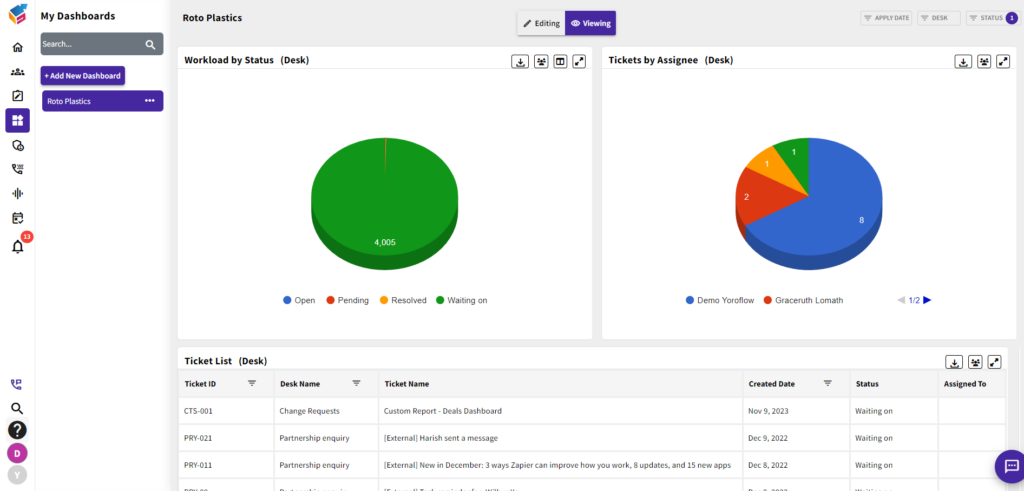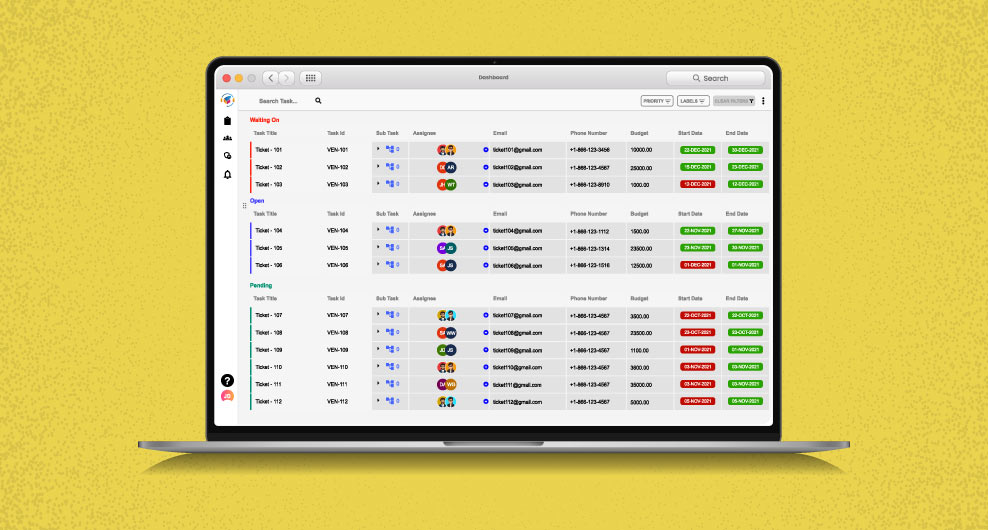What are the top helpdesk metrics and best practices?
Helpdesks are the first point of contact for customers, so it is important to have metrics in place that measures the quality of self-service customer service.
Metrics are a way to measure customer service, customer satisfaction and helpdesk performance. There are many different metrics that can be used to measure customer service, customer satisfaction and helpdesk performance. The most common customer service metrics used by companies include:
- Average handle time (AHT)
- Average wait time (AWT)
- Customer satisfaction rating (CSR)
- Customer service index (CSI)
- On hold time (OHT)
- Abandonment rate (%)
Tips for managing your helpdesk
The following is a list of helpful tips for managing your IT service desk.

- Be proactive instead of reactive in solving customer problems with self-service portal.
- Be proactive about monitoring the helpdesk to make sure it’s running smoothly and efficiently using customer service automation tool.
- Make sure you have an organized and efficient process for handling customer inquiries and requests, from opening a ticket to closing one using ticketing system.
- Have a clear understanding of what the company’s service levels are, how to measure them, and how to ensure they are met consistently.
- Keep track of your helpdesk metrics on a regular basis by building a knowledge base so that you can identify any potential problems early on and take corrective action with the help of helpdesk software before they become major issues.
What are the different types of helpdesk metrics?
The helpdesk metrics in ticketing system are used to measure the customer service of a company. They can be categorized into three different types:
- Helpdesk ticket volume: This metric measures the number of tickets submitted by customers within a given period time. It is measured in tickets per hour, tickets per day, or tickets per month.
- Average handle time: This metric is used to measure how long it takes for an agent to respond to a ticket after it has been submitted by the customer.
- Customer satisfaction: This metric is used to measure how satisfied customers are with the service they received from an agent on a scale of 1-5 (with 5 being very satisfied).
Helpdesk metrics are the way to measure customer satisfaction. There are three types of helpdesk metrics:
- Satisfaction rates
- Net promoter score (NPS)
- Customer effort score (CES)
There are two ways to measure the quality of customer service. It is not something that can be measures in one metric.
- Call center metrics: These are the most important metrics for call center service. They include average handle time, average wait time, and total calls handled per day or week.
- Helpdesk metrics: It tracks how many helpdesk tickets were resolved, how long each ticket took to resolve, and what type of tickets were resolved.
How to track the most important helpdesk metrics?
Companies can use AI assisted customer service calls to track IT helpdesk and the most important metrics. They can measure the accuracy of their customer service agents and analyze how this impacts their customers’ satisfaction.
There are many metrics that companies can track in order to improve their customer service. Some of them are call abandonment rate, average call duration, and customer satisfaction score. Tracking these metrics using helpdesk software will allow companies to understand how they are doing in terms of providing quality customer service.
The customer support accuracy metric is the percentage of customer service calls that are resolved by the agent. It is calculated by dividing the number of resolved calls by the total number of customer-service calls and multiplying it by 100.
There are some other metrics that can be tracked, such as average time on hold, average call length, first contact resolution rate and abandonment rate.
Why you should measure your support team’s KPIs?
It is important for a company to measure the KPIs of their support team so that they know how to measure help desk performance. They KPIs can be measured in three ways:
- By analyzing the number of tickets closed and the time taken to resolve them.
- By analyzing customer satisfaction score.
- By analyzing agent performance benchmarks, which are set by the company based on its own standards and needs.
There are many reasons why you should measure your support team KPIs via ticketing system. The first and most obvious one is that it helps you set goals for your agents. You can then measure the performance of your agents against these benchmarks, which will help you to identify the best performance.
The second reason is that measuring KPIs helps you to identify gaps in your customer service strategy and take steps to improve them. For example, if a large percentage of customers have complaints about a particular feature, then this is an area where you need to improve the experience for the customer.
- Customer Feedback and Reviews
Customer feedback is a vital part of any business. It tells the company what is being done well and what needs to be improved.
- Know the Customer’s Pain Points
Companies need to understand the pain points of their customers in order to create a better service experience. They should be able to review feedback and use it as a tool for improvement.
The most important thing that companies should do is to listen to their customers and respond accordingly. This will help them identify the pain points so that they can take some measures against it.
Conclusion
Even though the helpdesk metrics are not perfect, they are still a useful tool like helpdesk software or ticketing system to measure the quality of a support team.
The helpdesk metrics shows that many people are still struggling with the basis of a computer literacy.
This is why it is important to make sure your helpdesk metrics are up to date and you have all the necessary information on how to get your customers back up and running.




